A Study on the Dynamic Forming Mechanism Development of the Negative Poisson’s Ratio Elastomer Molds—Plate to Plate (P2P) Forming Process
Abstract
:1. Introduction
2. Stretching Deformation Mechanism of Negative Poisson’s Ratio Elastomer Molds
2.1. Prediction Modeling and Computational Evaluation Method on the Viscoelasticity Response of the NPR Structure and Material
2.2. Prediction Method for the Uniaxial Stretching Microstructure Position with the Dynamic NPR Mold Control System
2.3. Effects of Multidirectional Stretching on Molds under External Force
3. Experimental
3.1. Geometry Design of NPR Structure, Bonding in Mold Preparation, and Flexible NPR Microstructure Mold Preparation
3.1.1. Geometry Design of NPR Structure and Bonding in Mold Preparation
3.1.2. Uniaxial Parallel Flexible NPR Microstructure Mold Preparation
3.2. Dynamic NPR P2P-Forming System Development and Uniaxial Parallel NPR-Embossing Steps
3.2.1. Dynamic NPR P2P-Forming System Design
3.2.2. Uniaxial Parallel Flexible NPR Microstructure Forming Steps
4. Results and Discussion
4.1. Simulation and Analysis of NPR Structures
4.1.1. Simulation and Analysis of Single SIN Waveforms and Array SIN Waveforms
4.1.2. Simulation Analysis of Stress Distribution in Molds with Different Composite Ratios and Uneven Stretching Angles
4.2. Simulation and Analysis of Microstructure Mold Control by Using Parallel Dynamic NPR Molds
4.2.1. Simulation Analysis of Overall Mold Laying
4.2.2. Simulation Analysis of Single-Point Array Laying
4.3. Verification and Discussion of MATLAB Simulation and Dynamic NPR-Embossing Experiment
4.3.1. Dynamic NPR-Embossing Replication Predicted by MATLAB Simulation
4.3.2. Discussion of Uniaxial Dynamic NPR Microstructure Replication
4.3.3. Discussion of Multi-Directional Dynamic NPR Microstructure Replication
5. Conclusions
Author Contributions
Funding
Institutional Review Board Statement
Informed Consent Statement
Data Availability Statement
Acknowledgments
Conflicts of Interest
References
- Chou, S.Y.; Krauss, P.R.; Renstrom, P.J. Imprint of sub-25 nm vias and trenches in polymers. Appl. Phys. Lett. 1995, 67, 3114–3116. [Google Scholar] [CrossRef] [Green Version]
- Chou, S.Y.; Krauss, P.R.; Zhang, W.; Guo, L.; Zhuang, L. Sub-10 nm imprint lithography and applications. J. Vac. Sci. Technol. B 1997, 15, 2897. [Google Scholar] [CrossRef]
- Chang, J.H.; Yang, S.Y. Gas pressurized hot embossing for transcription of micro-features. Microsyst. Technol. Microsyst. Technol. 2003, 10, 76–80. [Google Scholar] [CrossRef]
- Lee, J.; Park, H.-H.; Choi, K.-B.; Kim, G.; Lim, H. Fabrication of hybrid structures using UV roll-typed liquid transfer imprint lithography for large areas. Microelectron. Eng. 2014, 127, 72–76. [Google Scholar] [CrossRef]
- Ye, H.; Cao, Z.; Li, M. Rapid fabrication of semiellipsoid microlenses using 3D-printing and roll-to-roll imprinting process. Microsyst. Technol. 2018, 24, 3437–3441. [Google Scholar] [CrossRef]
- Dy, A.J.; Cosmanescu, A.; Sluka, J.; Glazier, J.A.; Stupack, D.; Amarie, D. Fabricating microfluidic valve master molds in SU-8 photoresist. J. Micromech. Microeng. 2014, 24, 057001. [Google Scholar] [CrossRef] [Green Version]
- Patze, S.; Huebner, U.; Weber, K.; Cialla-May, D.; Popp, J. TopUp SERS substrates with integrated internal standard. Materials 2018, 11, 325. [Google Scholar] [CrossRef] [PubMed] [Green Version]
- Kuriganova, A.; Faddeev, N.; Gorshenkov, M.; Kuznetsov, D.; Leontyev, I.; Smirnova, N. A Comparison of “Bottom-Up” and “Top-Down” Approaches to the Synthesis of Pt/C Electrocatalysts. Processes 2020, 8, 947. [Google Scholar] [CrossRef]
- Rengarajan, V.; Geng, J.; Huang, Y. Fabrication of tapered 3D microstructure arrays using dual-exposure lithography (DEL). Micromachines 2020, 11, 903. [Google Scholar] [CrossRef]
- Chen, R.H.; Weng, Y.J.; Yang, S.Y. Magnetic fluid microstructure curved surface uniform embossing and photocuring process technology. Polym. Adv. Technol. 2016, 27, 630–641. [Google Scholar] [CrossRef]
- Weng, Y.J.; Tsai, C.Y. Study on imprinting and replica molding of quasi-grey scale soft mold curved surface microstructure mold. Microelectron. Eng. 2018, 191, 32–37. [Google Scholar] [CrossRef]
- Yang, S.N.; Liu, X.Q.; Zheng, J.X.; Lu, Y.M.; Gao, B.R. Periodic Microstructures Fabricated by Laser Interference with Subsequent Etching. Nanomaterials 2020, 10, 1313. [Google Scholar] [CrossRef] [PubMed]
- Jefimovs, K.; Vila-Comamala, J.; Arboleda, C.; Wang, Z.; Romano, L.; Shi, Z.; Kagias, M.; Stampanoni, M. Fabrication of x-ray gratings for interferometric imaging by conformal seedless gold electroplating. Micromachines 2021, 12, 517. [Google Scholar] [CrossRef] [PubMed]
- Hillmer, H.; Woidt, C.; Istock, A.; Kobylinskiy, A.; Nguyen, D.T.; Ahmed, N.; Brunner, R.; Kusserow, T. Role of nanoimprint lithography for strongly miniaturized optical spectrometers. Nanomaterials 2021, 11, 164. [Google Scholar] [CrossRef] [PubMed]
- Weng, Y.J. Development of Belt-Type Microstructure Array Flexible Mold and Asymmetric Hot Roller Embossing Process Technology. Coatings 2019, 9, 274. [Google Scholar] [CrossRef] [Green Version]
- Jia, T.; Wang, X.; Ren, Y.; Su, Y.; Zhang, L.; Yang, H.; Qi, Y.; Liu, W. Incidence Angle Effects on the Fabrication of Microstructures Using Six-Beam Laser Interference Lithography. Coatings 2021, 11, 62. [Google Scholar] [CrossRef]
- Wu, M.; Kumar Saxena, K.; Guo, Z.; Qian, J.; Reynaerts, D. Fast Fabrication of Complex Surficial Micro-Features Using Sequential Lithography and Jet Electrochemical Machining. Micromachines 2020, 11, 948. [Google Scholar] [CrossRef] [PubMed]
- Feng, Y.; Lou, Y.; Shen, J. Microstructure-Forming Mechanism of Optical Sheet Based on Polymer State Transition in Injection-Rolling Process. Polymers 2021, 13, 181. [Google Scholar] [CrossRef]
- Dardano, P.; De Martino, S.; Battisti, M.; Miranda, B.; Rea, I.; De Stefano, L. One-Shot Fabrication of Polymeric Hollow Microneedles by Standard Photolithography. Polymers 2021, 13, 520. [Google Scholar] [CrossRef]
- Weng, Y.J. Forming of Dynamic Microstructure of Flexible Polymer. Materials 2019, 12, 3332. [Google Scholar] [CrossRef] [Green Version]
- Chen, X.; He, Y.; Chen, X.; Huang, C.; Li, Y.; Cui, Y.; Yuan, C.; Ge, H. Non-Iridescent Metal Nanomesh with Disordered Nanoaper-Tures Fabricated by Phase Separation Lithography of Polymer Blend as Transparent Conductive Film. Materials 2021, 14, 867. [Google Scholar] [CrossRef]
- Lee, D.; Tang, Y.L.; Liu, S.J. Fast fabrication of nanostructured films using nanocolloid lithography and UV soft mold roller embossing: Effects of processing parameters. Polymers 2021, 13, 405. [Google Scholar] [CrossRef]
- Tsao, C.W.; Wu, Z.K. Polymer Microchannel and Micromold Surface Polishing for Rapid, Low-Quantity Polydimethylsiloxane and Thermoplastic Microfluidic Device Fabrication. Polymers 2020, 12, 2574. [Google Scholar] [CrossRef] [PubMed]
- Vlnieska, V.; Zakharova, M.; Mikhaylov, A.; Kunka, D. Lithographic Performance of Aryl Epoxy Thermoset Resins as Negative Tone Photoresist for Microlithography. Polymers 2020, 12, 2359. [Google Scholar] [CrossRef]
- Khan, M.S.; Farooq, H.; Wittmund, C.; Klimke, S.; Lachmayer, R.; Renz, F.; Roth, B. Polymer Optical Waveguide Sensor Based on Fe-Amino-Triazole Complex Molecular Switches. Polymers 2021, 13, 195. [Google Scholar] [CrossRef]
- Weng, Y.J. The development of a dynamic rubber balloon spring-based asymmetric photocurable imprint system. Optik 2020, 201, 163479. [Google Scholar] [CrossRef]
- Lee, D.H.; Chuang, C.H.; Shaikh, M.O.; Dai, Y.S.; Wang, S.Y.; Wen, Z.H.; Yen, C.-K.; Liao, C.-F.; Pan, C.T. Flexible Piezoresistive Tactile Sensor Based on Polymeric Nanocomposites with Grid-Type Microstructure. Micromachines 2021, 12, 452. [Google Scholar] [CrossRef]
- Weng, Y.J.; Lee, H.J. Large-area roll printing and replication forming with curvature control of microlens array structures. Microsyst. Technol. 2021, 27, 1–9. [Google Scholar] [CrossRef]
- Lien, C.C.; Weng, Y.J.; Tsai, C.Y.; Wu, S.H. Gas-assisted microstructure elastic multiform UV imprint replication molding technology. Microsyst. Technol. 2017, 23, 1897–1906. [Google Scholar] [CrossRef]
- Spychalska, K.; Zając, D.; Baluta, S.; Halicka, K.; Cabaj, J. Functional polymers structures for (Bio) sensing application—A review. Polymers 2020, 12, 1154. [Google Scholar] [CrossRef] [PubMed]
- Zhu, Y.; Bengsch, S.; Zheng, L.; Long, Y.; Roth, B.W.; Wurz, M.C.; Twiefel, J.; Wallaschek, J. Experimental Investigation of the Rapid Fabrication of Micron and Submicron Structures on Polymers Utilizing Ultrasonic Assisted Embossing. Polymers 2021, 13, 2417. [Google Scholar] [CrossRef] [PubMed]
- Park, C.; Bae, J.; Choi, Y.; Park, W. Shear Stress-Triggered Deformation of Microparticles in a Tapered Microchannel. Polymers 2021, 13, 55. [Google Scholar] [CrossRef] [PubMed]
- Petersen, R.S.; Boisen, A.; Keller, S.S. Micromechanical Punching: A Versatile Method for Non-Spherical Microparticle Fabrication. Polymers 2021, 13, 83. [Google Scholar] [CrossRef]
- Gaikwad, A.; Desai, S. Molecular Dynamics Investigation of the Deformation Mechanism of Gold with Variations in Mold Profiles during Nanoimprinting. Materials 2021, 14, 2548. [Google Scholar] [CrossRef] [PubMed]
- Panusa, G.; Pu, Y.; Wang, J.; Moser, C.; Psaltis, D. Fabrication of sub-micron polymer waveguides through two-photon polymerization in polydimethylsiloxane. Polymers 2020, 12, 2485. [Google Scholar] [CrossRef]
- Noii, N.; Khodadadian, A.; Ulloa, J.; Aldakheel, F.; Wick, T.; Francois, S.; Wriggers, P. Bayesian inversion for unified ductile phase-field fracture. arXiv 2021, arXiv:2104.11114. [Google Scholar]
- Khodadadian, A.; Noii, N.; Parvizi, M.; Abbaszadeh, M.; Wick, T.; Heitzinger, C. A Bayesian estimation method for variational phase-field fracture problems. Comput. Mech. 2020, 66, 827–849. [Google Scholar] [CrossRef]
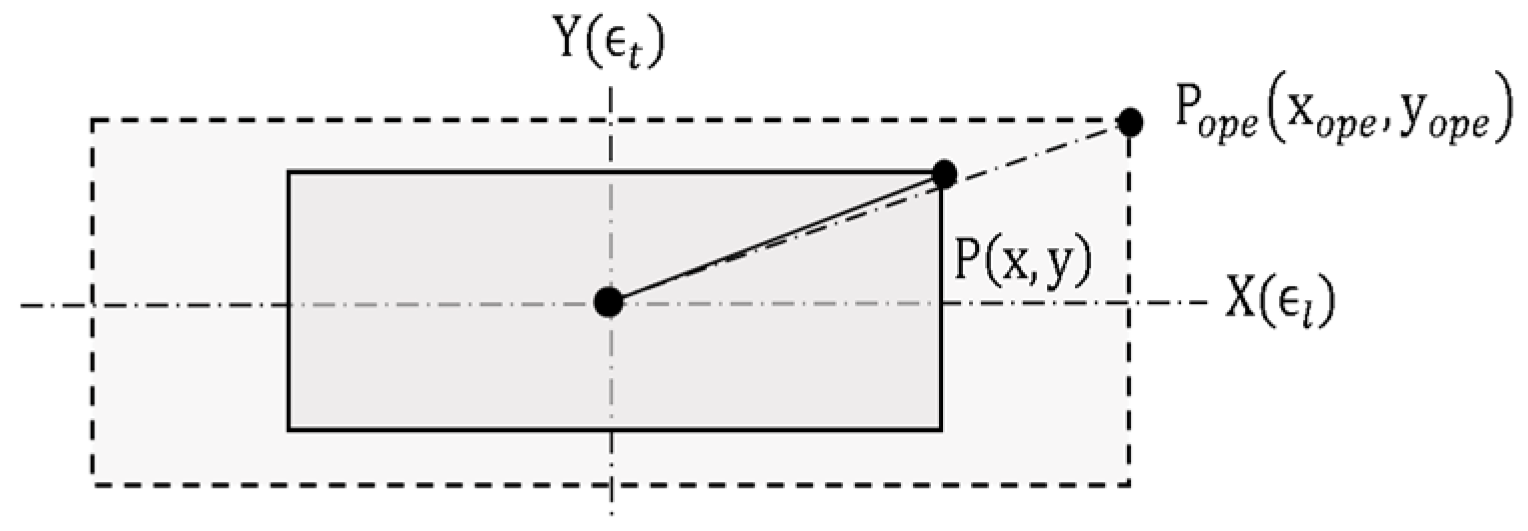
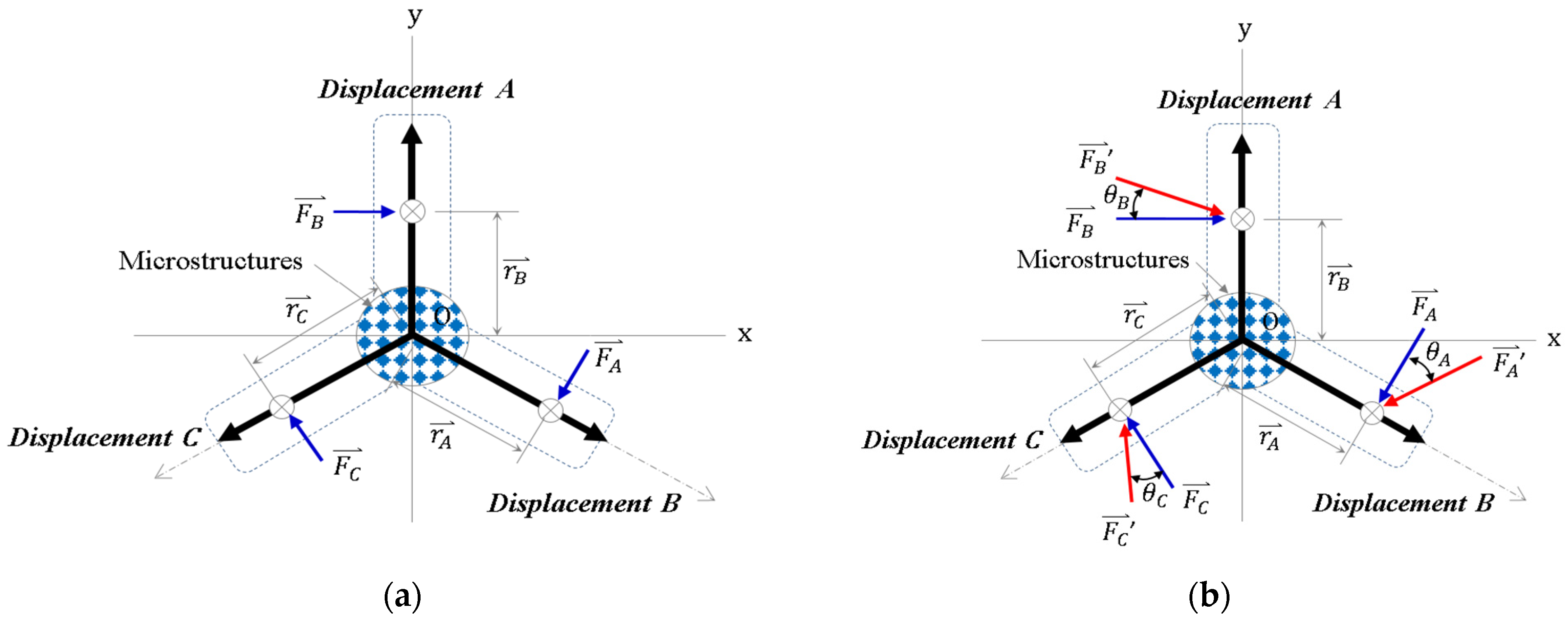
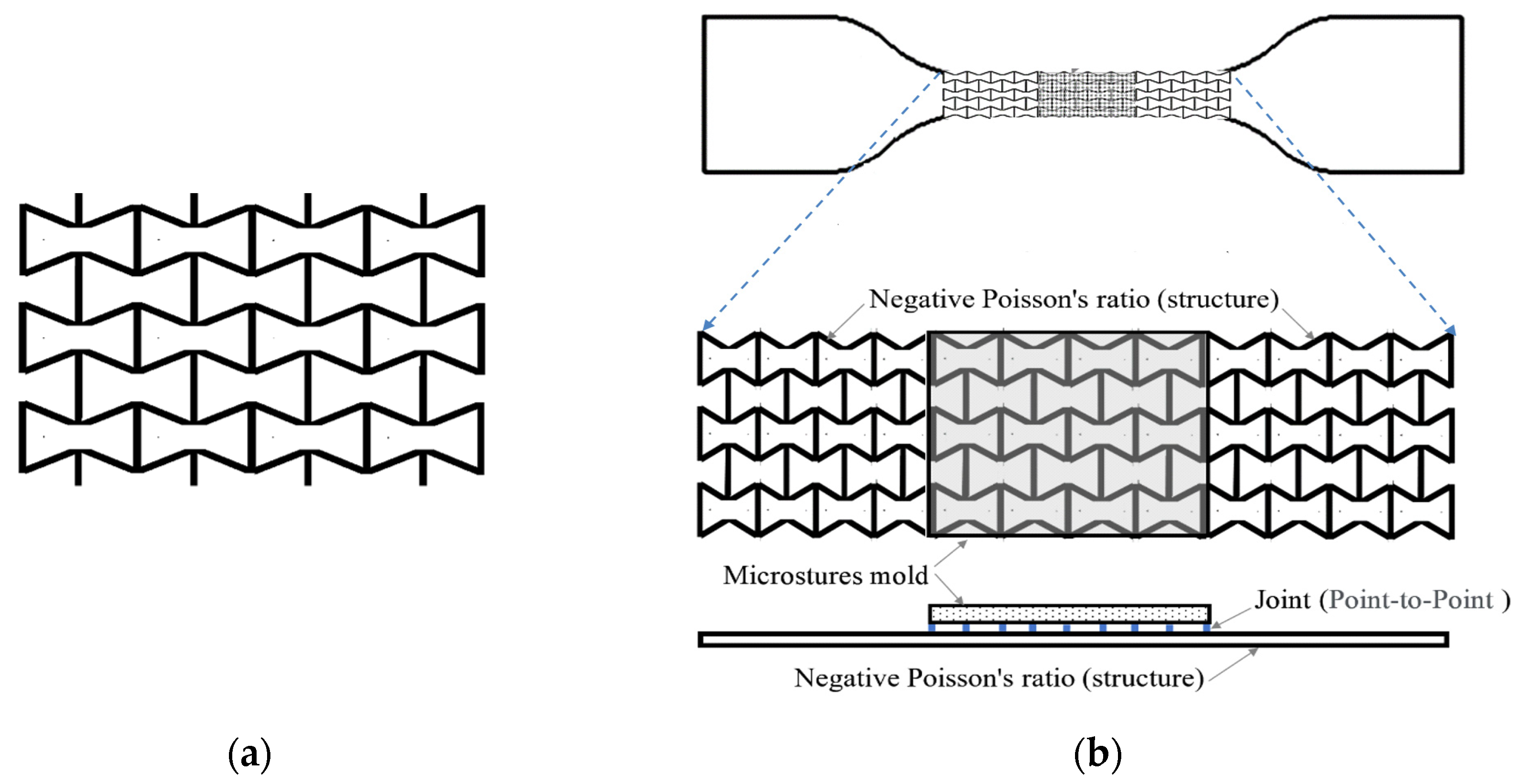

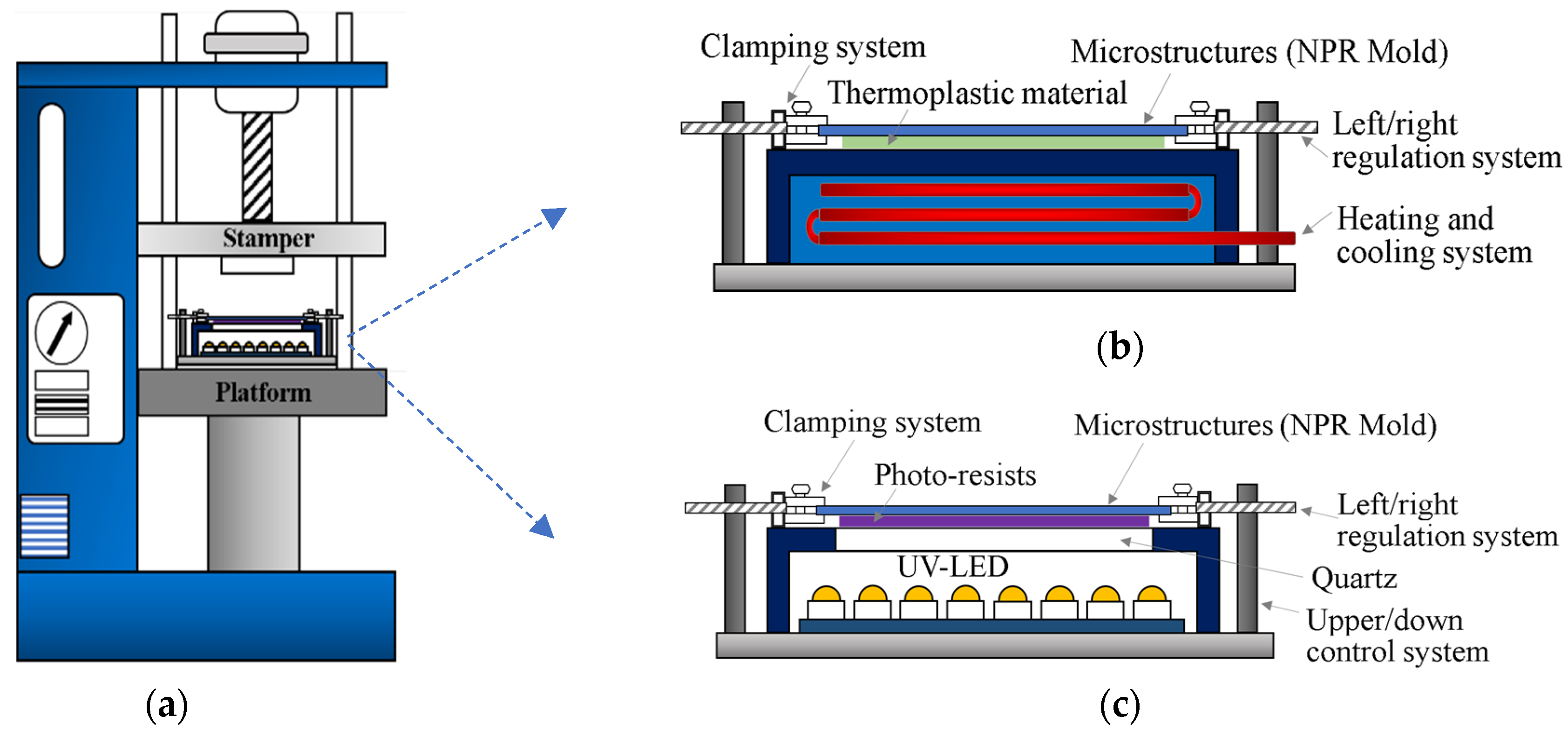
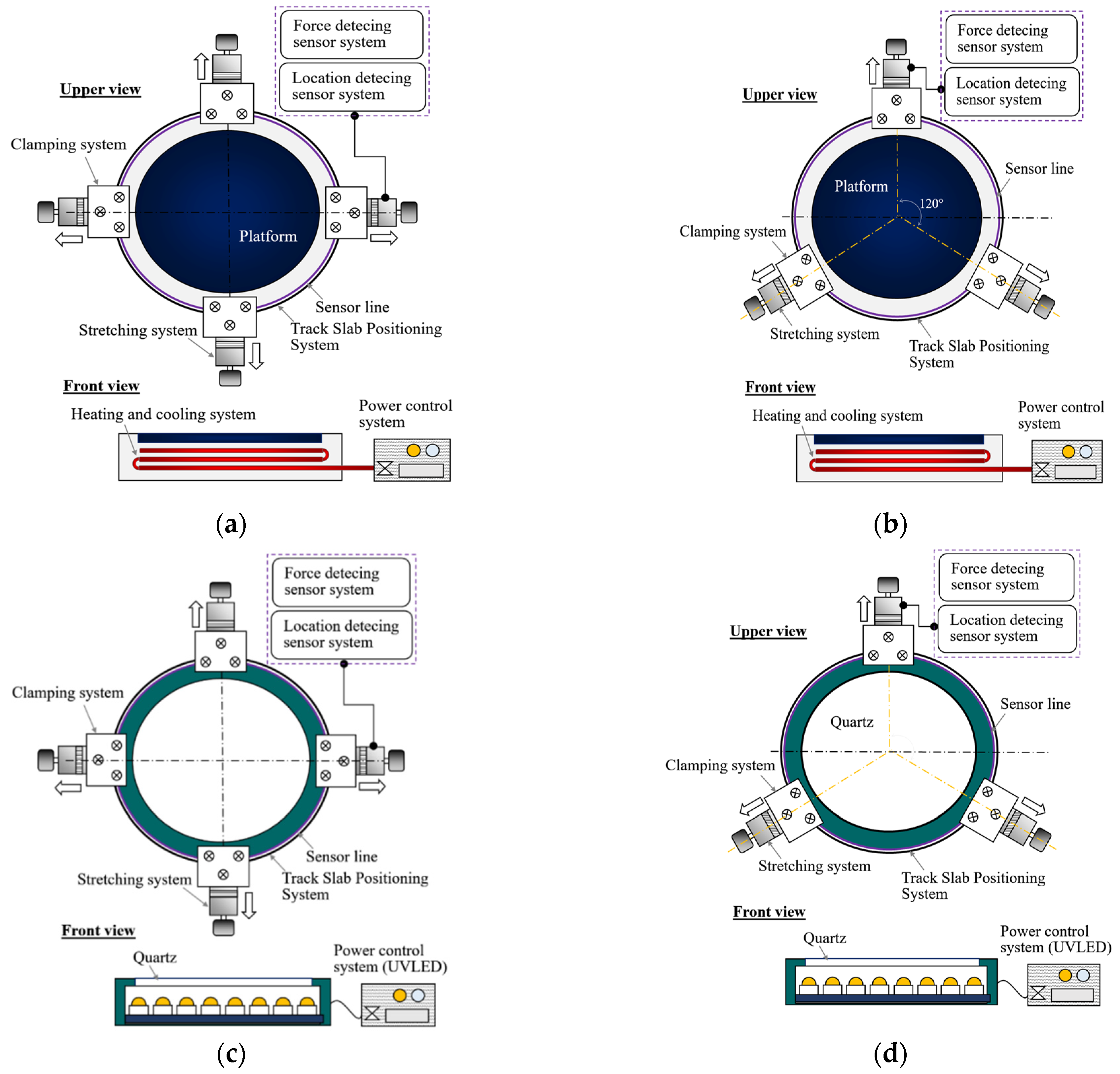
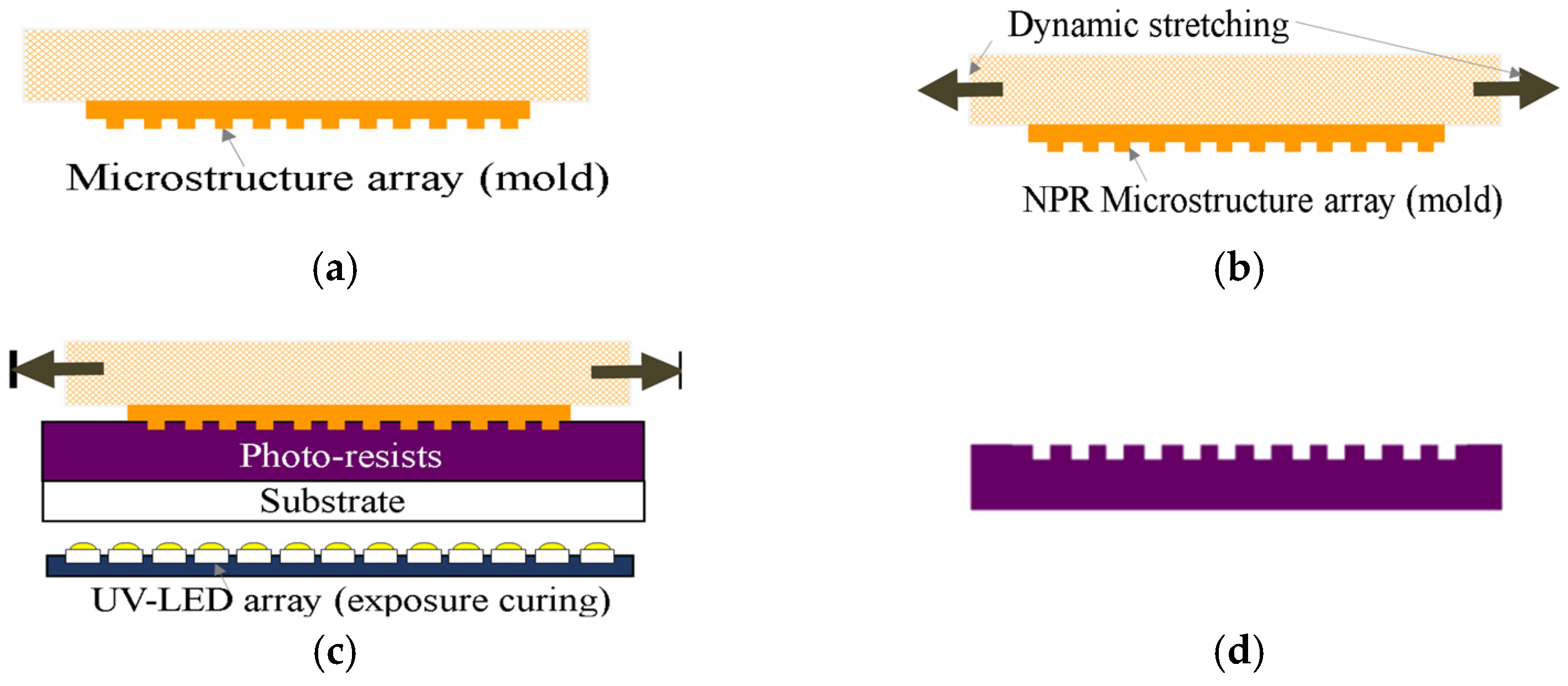


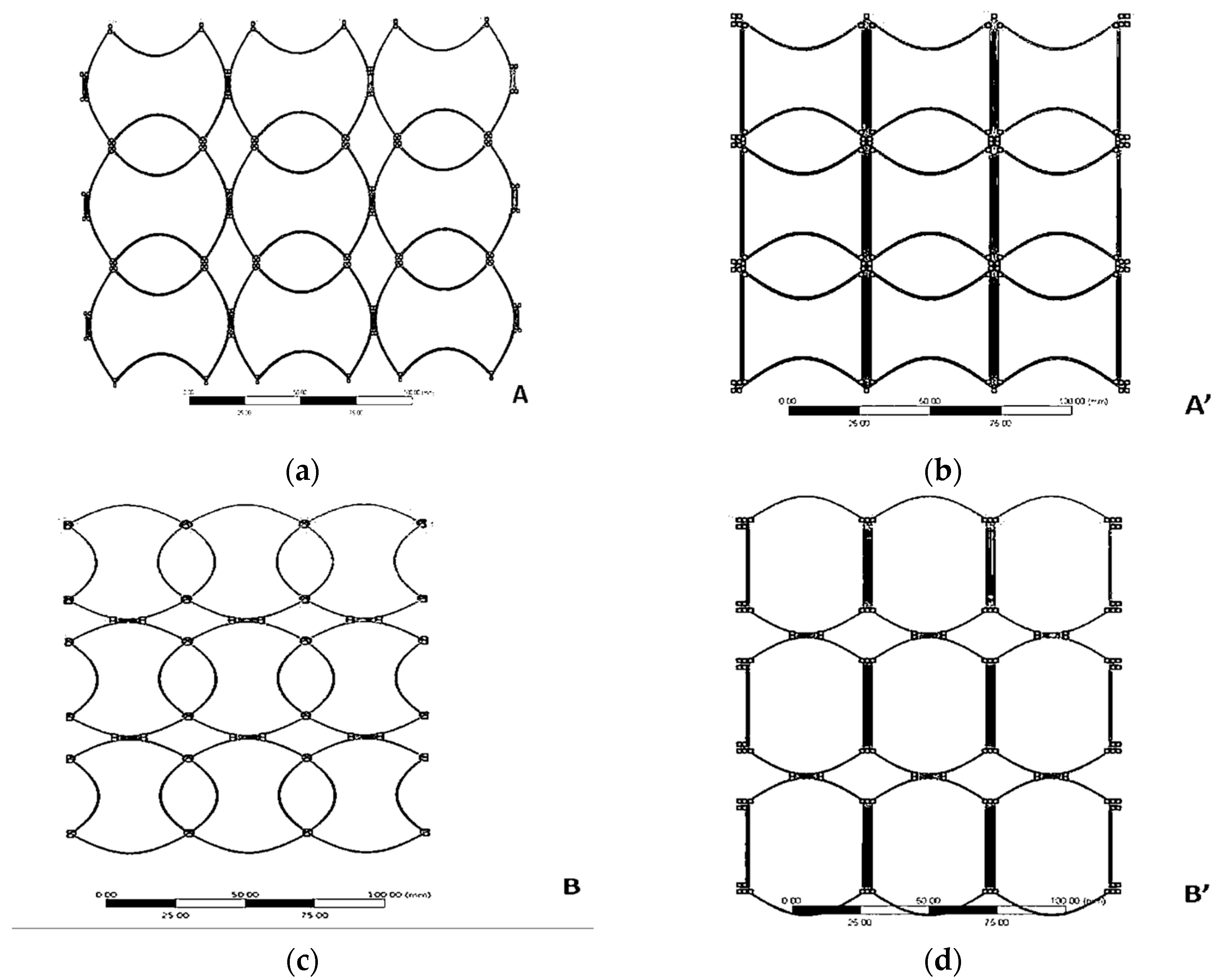
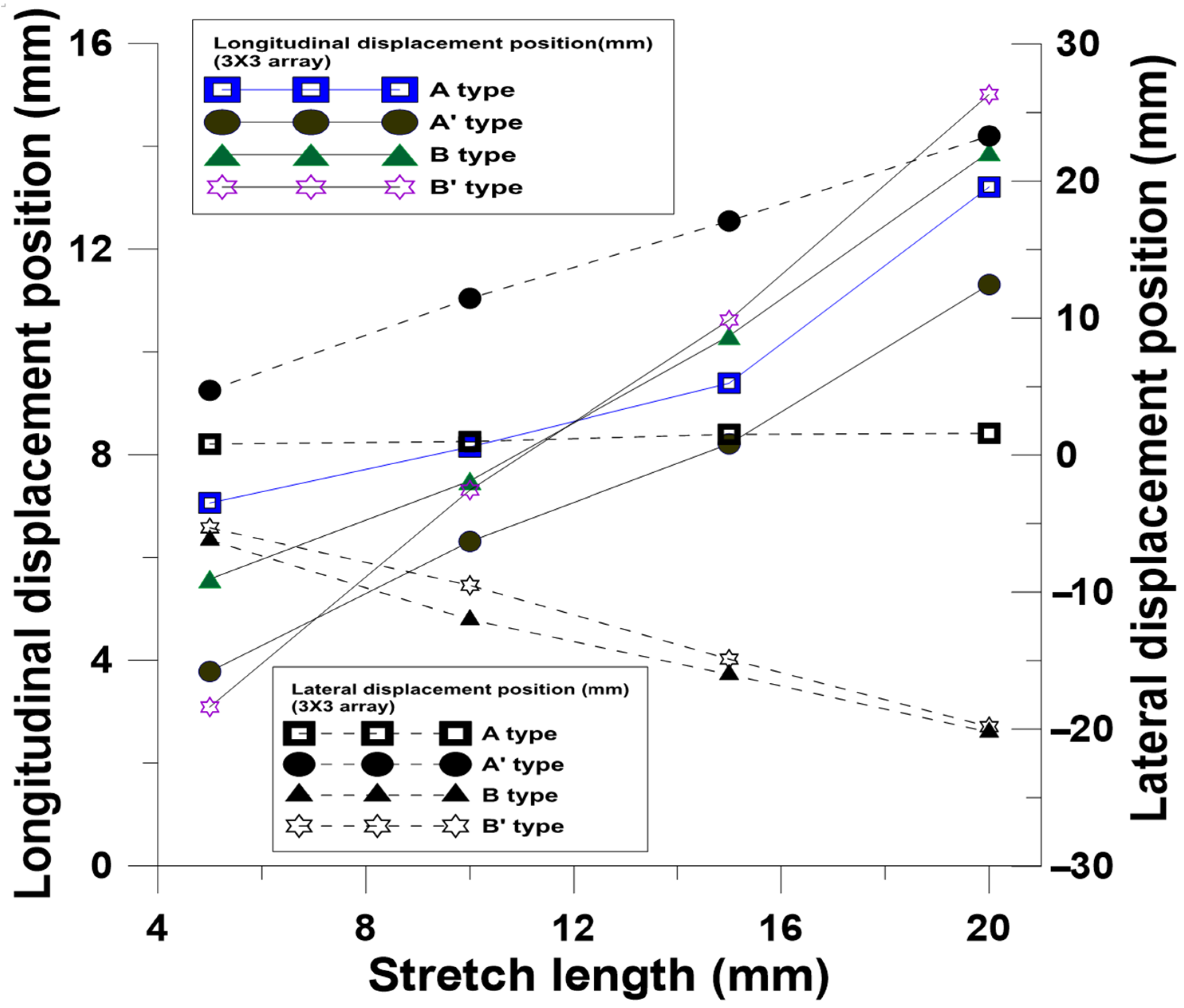
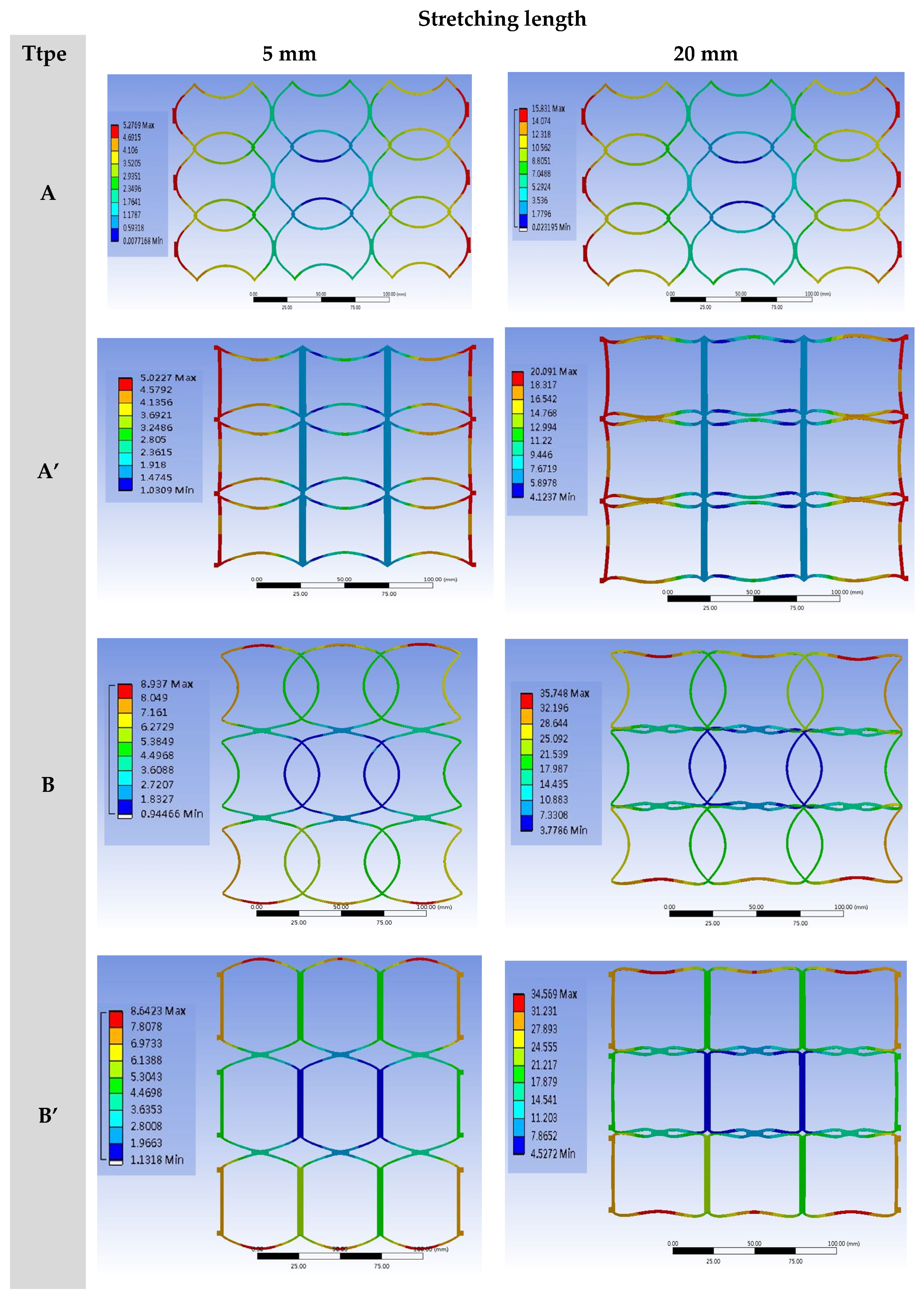
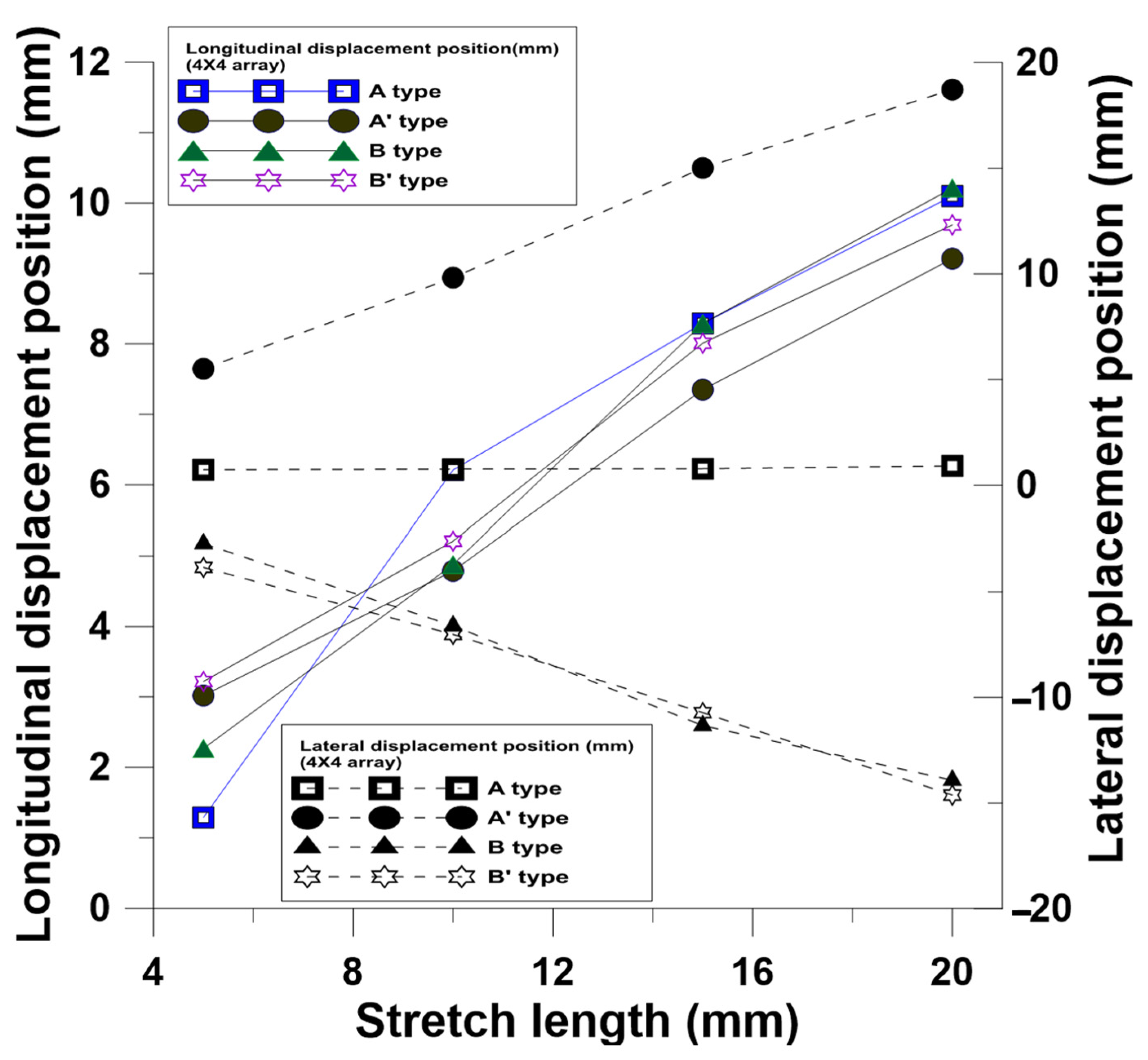
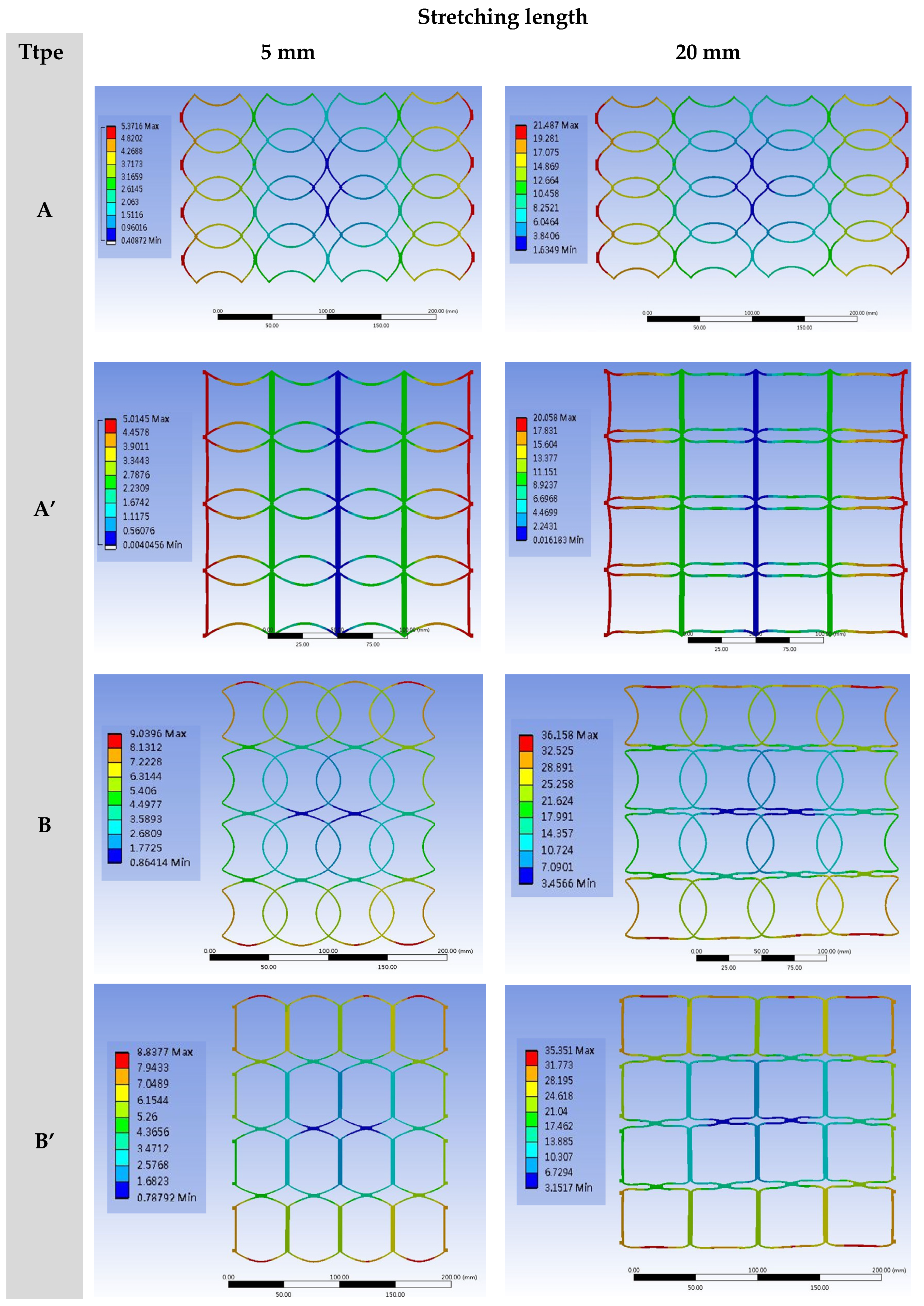
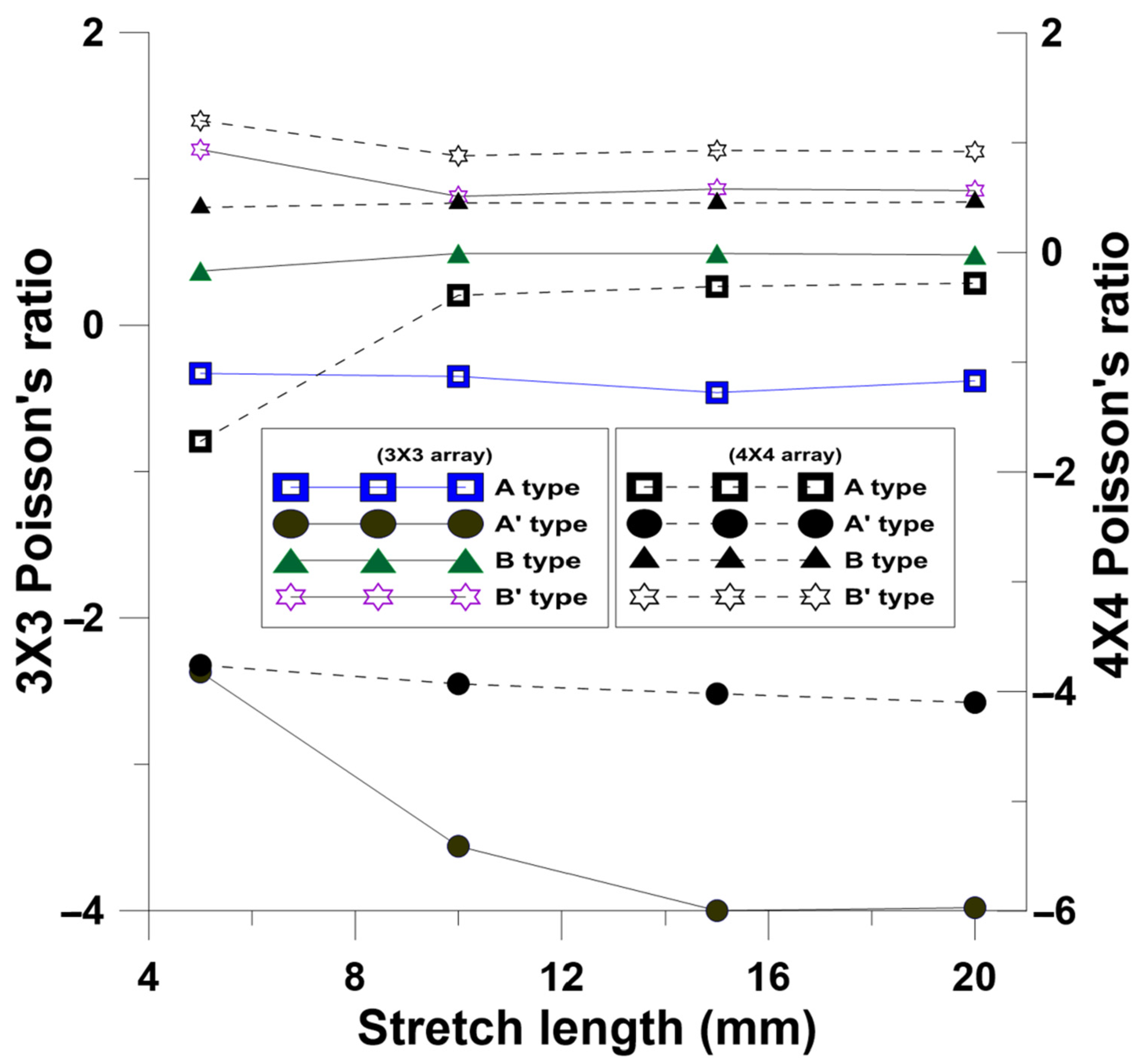
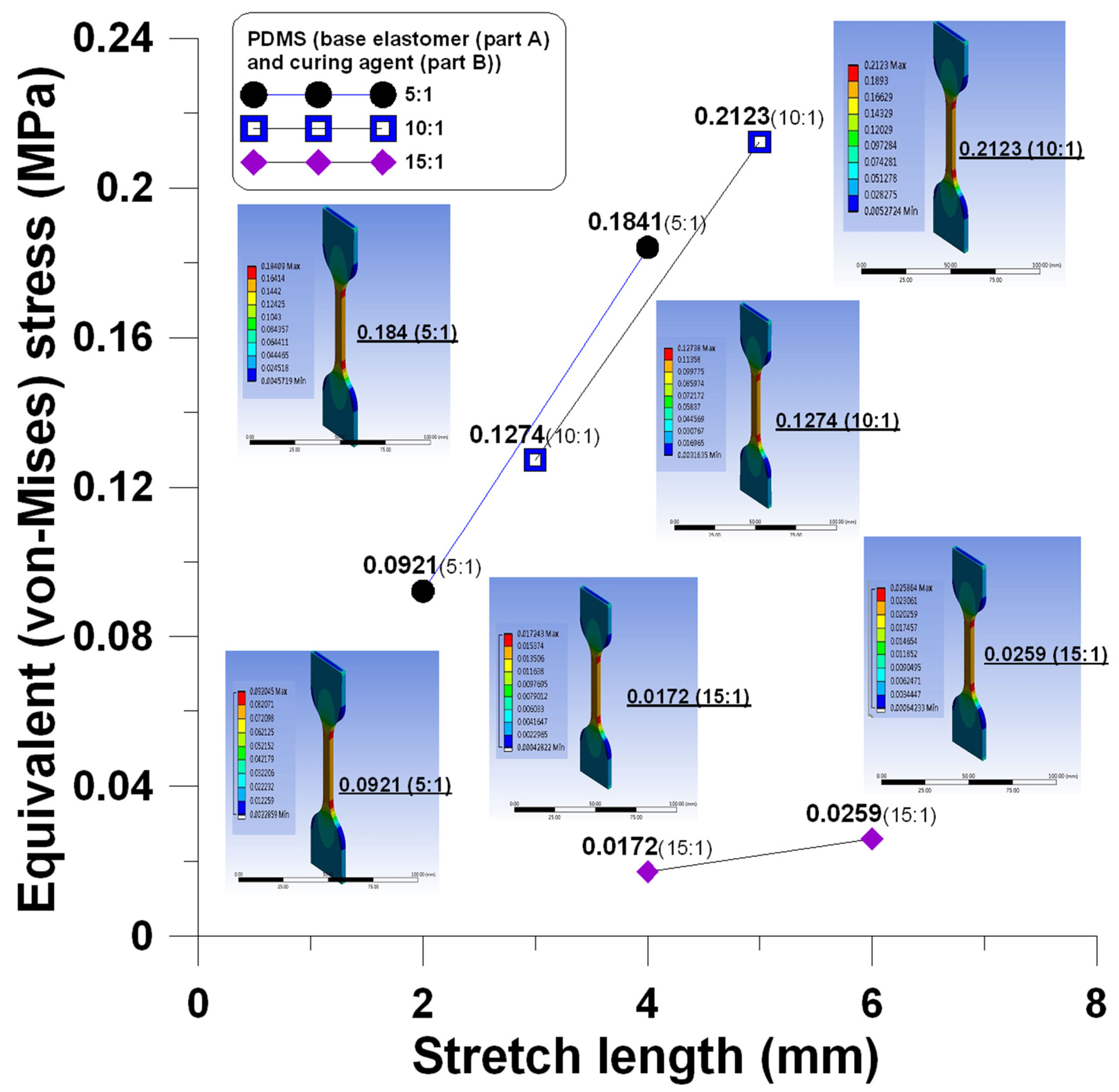
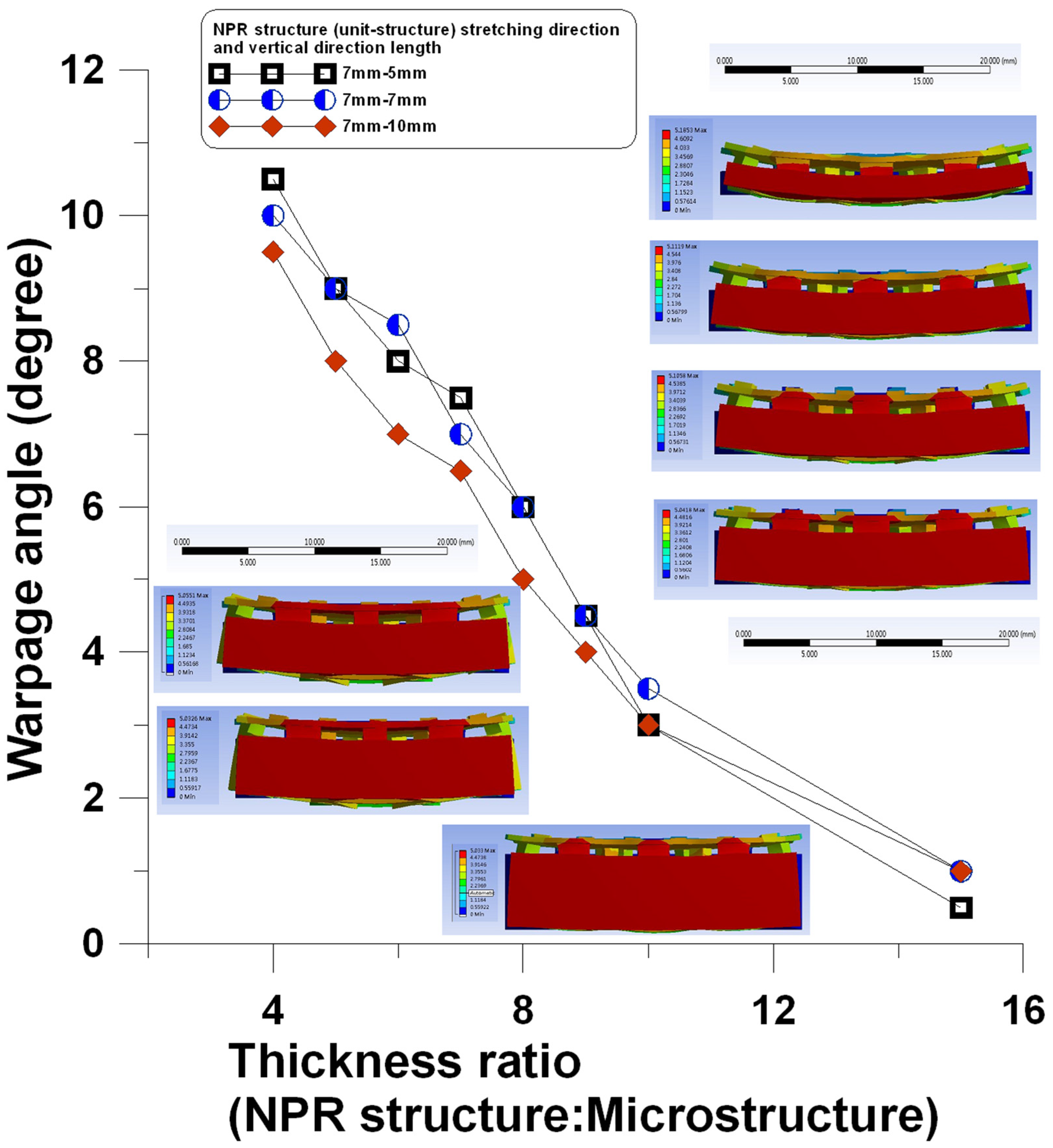
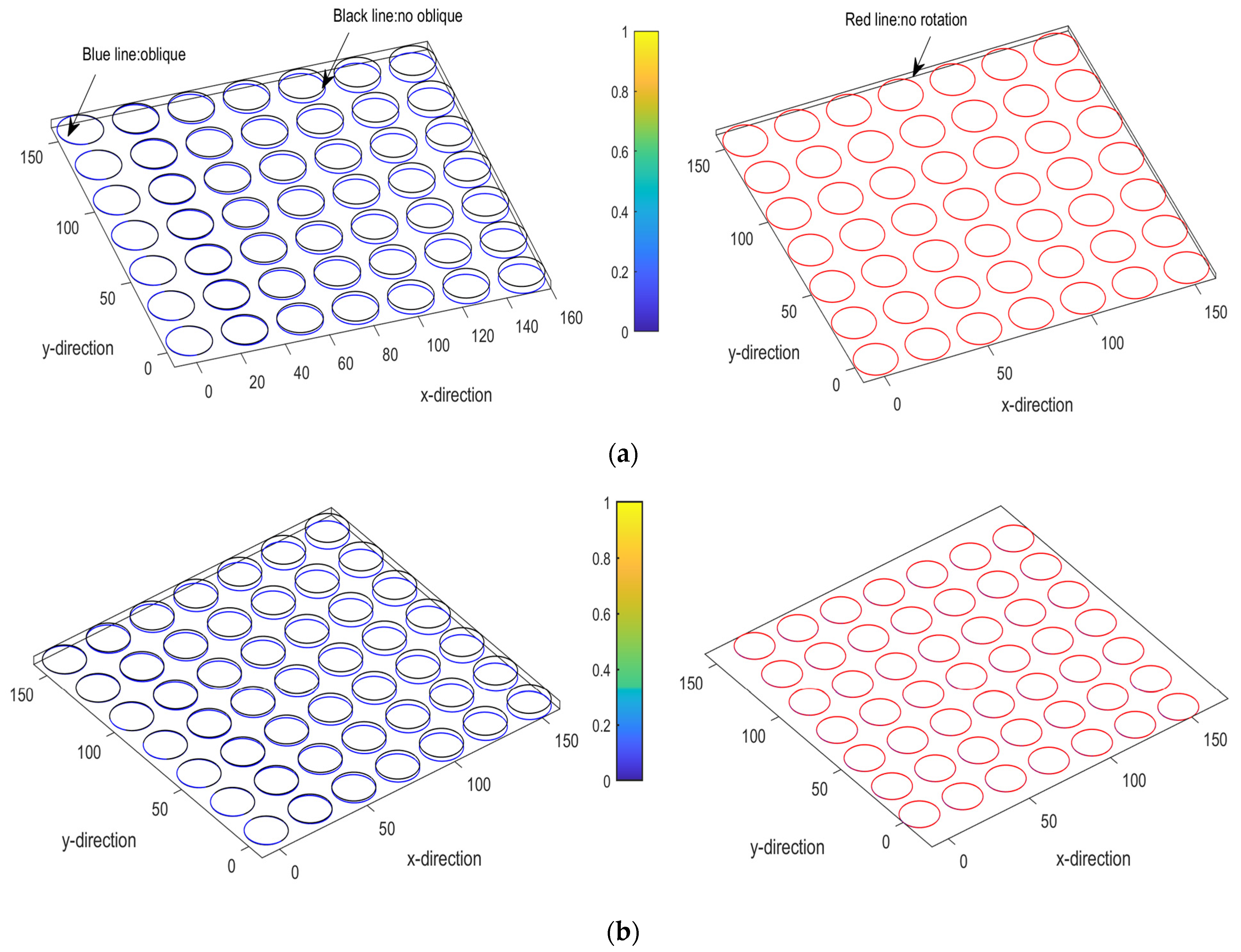
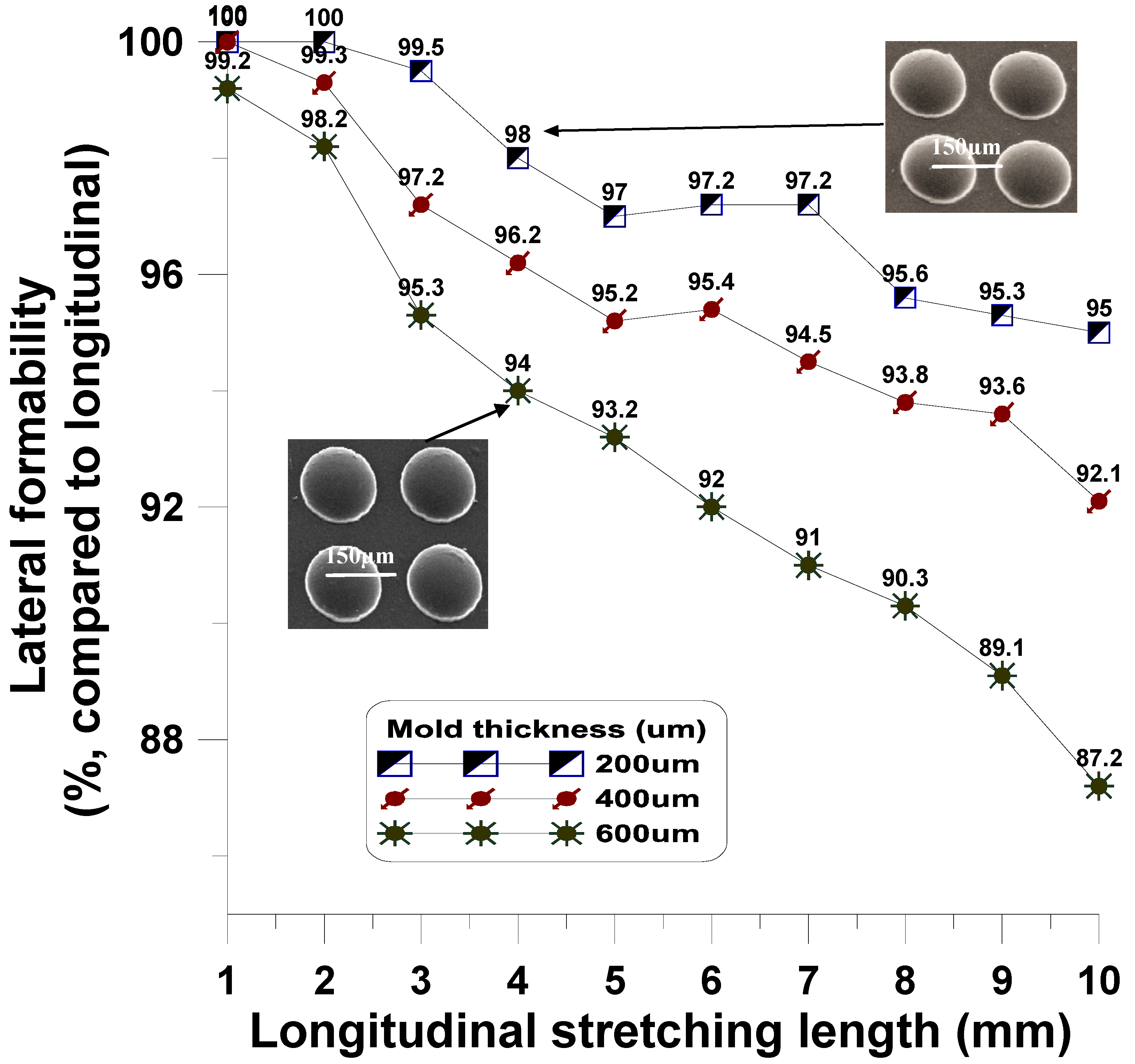
| Elastic Range (mm) (Experiment) | PDMS (Base Elastomer (Part A) and Curing Agent (Part B)) | ||
|---|---|---|---|
| 5:1 | 10:1 | 15:1 | |
| 1 | 4.55 | 5.88 | 7.21 |
| 2 | 4.59 | 5.84 | 7.13 |
| 3 | 4.62 | 5.87 | 7.18 |
| Average | 4.59 | 5.86 | 7.17 |
| Stretch Length (mm) | PDMS (Base Elastomer (Part A) and Curing Agent (Part B)) | ||
|---|---|---|---|
| 5:1 | 10:1 | 15:1 | |
| Equivalent (Von-Mises) Stress (MPa) | |||
| 2 | 0.0921 | - | - |
| 3 | - | 0.1274 | - |
| 4 | 0.1841 | - | 0.0172 |
| 5 | - | 0.2123 | - |
| 6 | - | - | 0.0259 |
| Equivalent stress increase per millimeter (MPa) | 0.0463 | 0.0425 | 0.0044 |
| Rotation Angle (Degree) | PDMS (Base Elastomer (Part A) and Curing Agent (Part B)) | ||
|---|---|---|---|
| 5:1 | 10:1 | 15:1 | |
| Equivalent (Von-Mises) Stress (MPa) | |||
| 15 | 0.1848 | 0.1201 | 0.0258 |
| 25 | 0.1865 | 0.1204 | 0.0260 |
| Equivalent stress increase per degree (KPa) | 0.17 | 0.03 | 0.02 |
| Thickness Ratio (Microstructure Mold:NPR Structure Mold) | NPR Structure (Unit-Structure), Stretching Direction, and Vertical Direction Length | ||
|---|---|---|---|
| 7 mm, 5 mm | 7 mm, 7 mm | 7 mm, 10 mm | |
| Warping Angle (Degree) | |||
| 1:4 | 10.5 | 10 | 9.5 |
| 1:5 | 9 | 9 | 8 |
| 1:6 | 8 | 8.5 | 7 |
| 1:7 | 7.5 | 7 | 6.5 |
| 1:8 | 6 | 6 | 5 |
| 1:9 | 4.5 | 4.5 | 4 |
| 1:10 | 3 | 3.5 | 3 |
| 1:15 | 0.5 | 1 | 1 |
Publisher’s Note: MDPI stays neutral with regard to jurisdictional claims in published maps and institutional affiliations. |
© 2021 by the authors. Licensee MDPI, Basel, Switzerland. This article is an open access article distributed under the terms and conditions of the Creative Commons Attribution (CC BY) license (https://creativecommons.org/licenses/by/4.0/).
Share and Cite
Weng, Y.-J.; Huang, J.-C.; Chen, Y.-Y.; Hsu, S.-T.; Zhang, Z.-R. A Study on the Dynamic Forming Mechanism Development of the Negative Poisson’s Ratio Elastomer Molds—Plate to Plate (P2P) Forming Process. Polymers 2021, 13, 3255. https://doi.org/10.3390/polym13193255
Weng Y-J, Huang J-C, Chen Y-Y, Hsu S-T, Zhang Z-R. A Study on the Dynamic Forming Mechanism Development of the Negative Poisson’s Ratio Elastomer Molds—Plate to Plate (P2P) Forming Process. Polymers. 2021; 13(19):3255. https://doi.org/10.3390/polym13193255
Chicago/Turabian StyleWeng, Yung-Jin, Jen-Ching Huang, Yueh-Yang Chen, Shao-Teng Hsu, and Zu-Rong Zhang. 2021. "A Study on the Dynamic Forming Mechanism Development of the Negative Poisson’s Ratio Elastomer Molds—Plate to Plate (P2P) Forming Process" Polymers 13, no. 19: 3255. https://doi.org/10.3390/polym13193255






